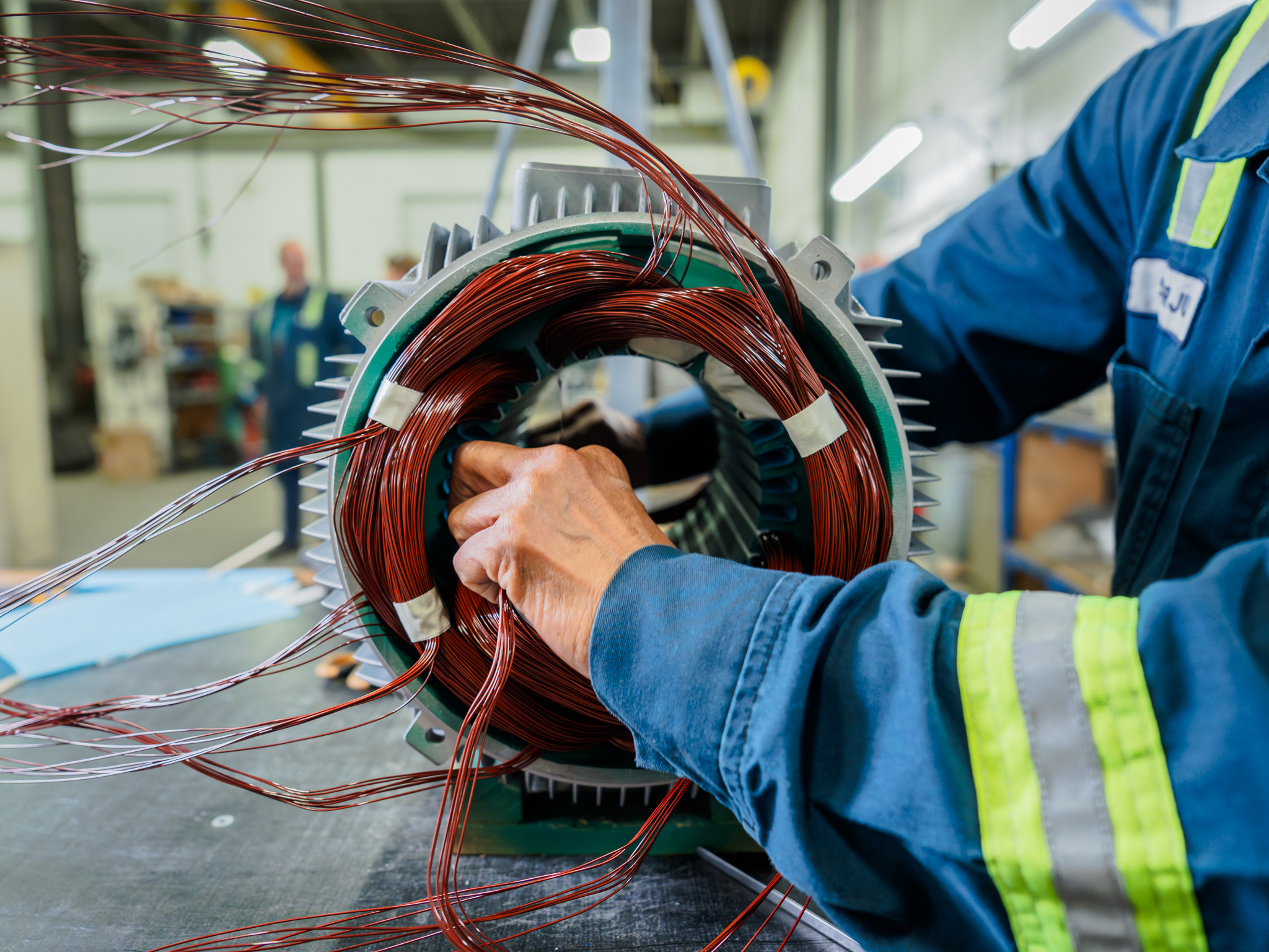Our Motor Rewind Capabilities
Stator Rewinds
We handle stator rewind services for motors up to 2000 horsepower. Each rewind is performed with insulation systems built to withstand demanding environments. This process restores performance and efficiency while promoting long-term reliability.
Armature Rewinding and Repair
Our armature rewinding services include complete teardown, failure analysis, re-insulation, and precision rewinding for DC motors. We offer armature repair and rewinding with a focus on durability and performance restoration.
Replacing Discontinued or Custom Motors
We specialize in replacing discontinued or custom motors by recommending or modifying replacements that match or exceed the original specifications. Whether it’s for legacy equipment or one-off designs, we provide reliable solutions that maintain performance, minimize downtime.
Voltage Changes
Our voltage change services allow for motor reconfiguration to meet new system requirements. We rewind the motor to support different voltage levels, ensuring safe operation, efficiency, and compliance with new power sources, all while preserving motor performance.
Why Choose Universal Rewind for Motor Rewinding?
Locally Owned for Over 50 years
Decades of proven work with motors in industrial, manufacturing, and specialty sectors.
Clear, Consistent Communication
We keep you informed at every step, from inspection to final delivery.
Certified Capabilities
We meet or exceed OEM and industry standards for rewind quality and safety.
What Is Motor Rewinding?
Motor rewinding is the process of replacing the copper windings in a motor’s stator or rotor to restore function after insulation failure, overheating, or electrical faults. Instead of replacing the motor entirely, rewinding is a cost-effective, reliable solution—especially for large or specialized motors.
Ready for a Rewind? Let’s Talk.
At Universal Rewind, we deliver expert electric motor services to maximize reliability and uptime for our customers. Contact us today to discuss your repair, get a quote, or schedule a pickup.
Based in Edmonton | Serving Western Canada

